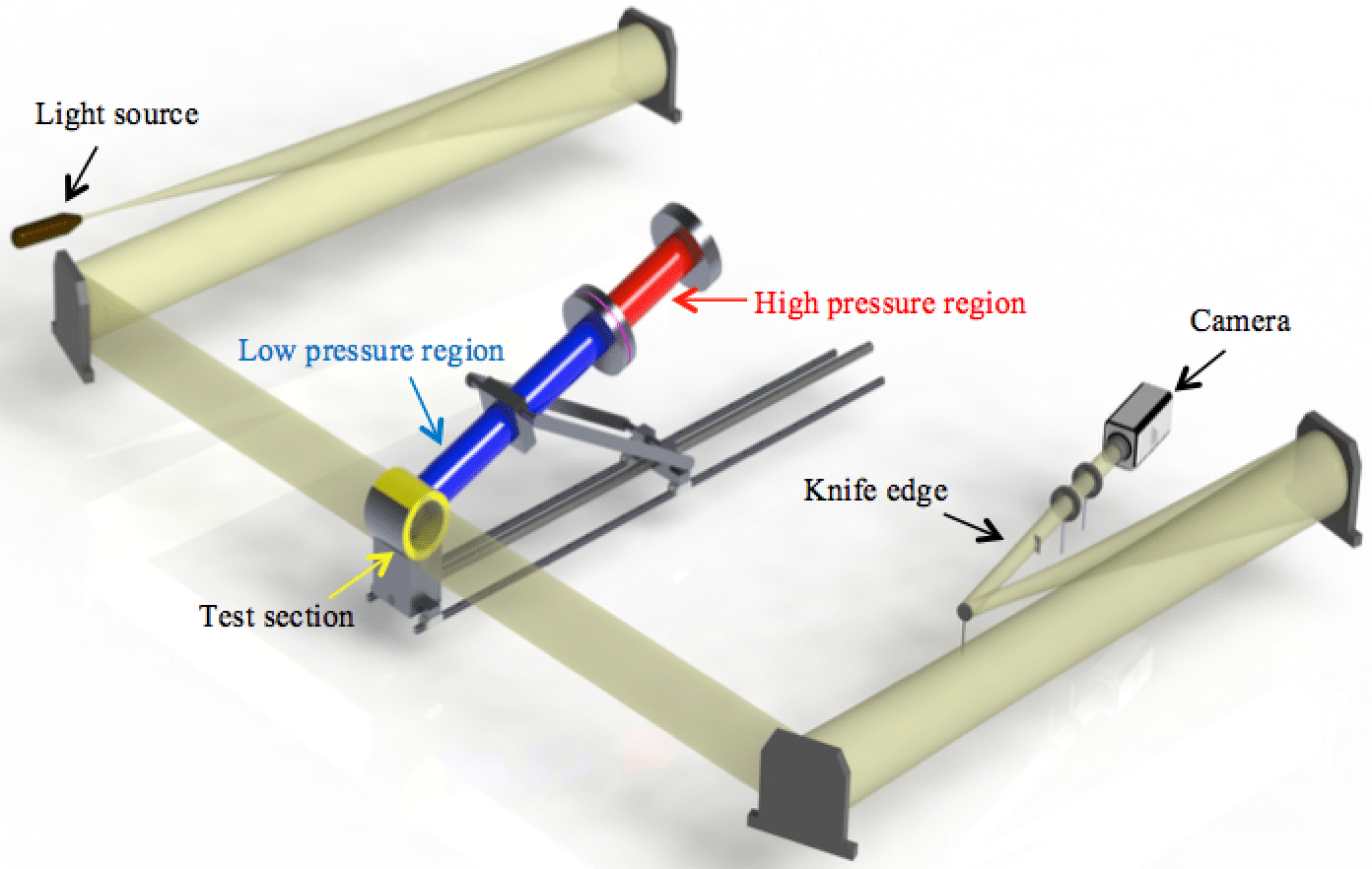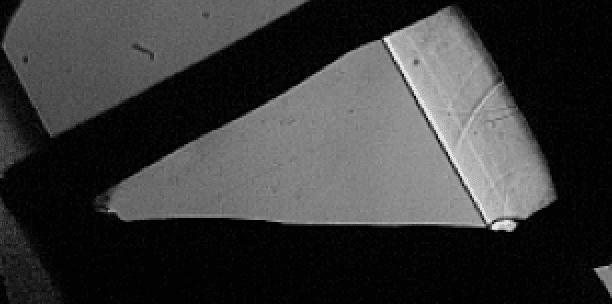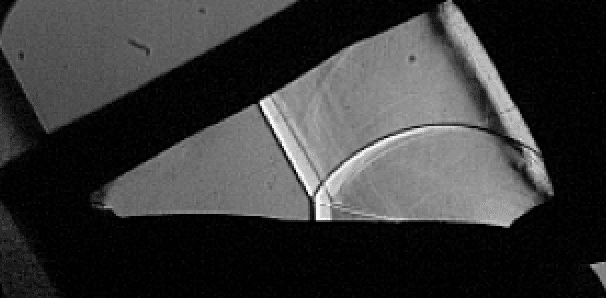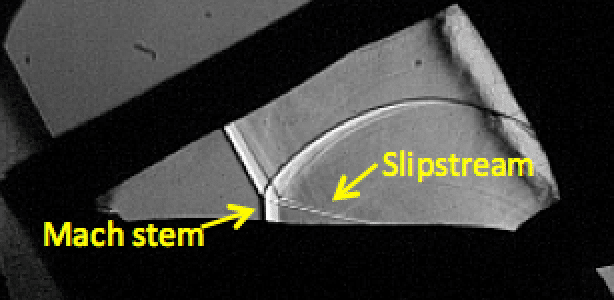To study the shock wave attenuation provided by liquid curtains, it is important to first understand the shock wave dynamics of an incident planar shock wave as it impacts a liquid curtain at various angles through a range of Mach numbers. Historically, shock wave reflections were originally reported as far back as 1878 by Ernst Mach and thoroughly configured by von Neumann in depth in the early 1940’s. Since experimental investigations never agreed with analytical and/or numerical solutions in the full range of incident Mach number and reflecting wedge angles, Ben-Dor et al. (1987) performed a series of experiments on different types of reflecting solid conditions and Takayama et al. (1989) investigated pseudo-steady oblique shock wave reflections using water wedges.

Fig 1. Schematic illustration of shock wave reflections

Fig 2. Z-folded schlieren setup and shock tube
Inspired by previous research, the reflection patterns and transition angles from irregular to regular shock reflections were established through the means of a tilted shock tube as shown in Figure 1. High-speed schlieren photography was used to visualize the shock reflections. The tilted shock tube and z-folded schlieren setup illustrated in Figure 2. The shock tube can be positioned to any angle between the horizontal and vertical planes to study shock reflections over a wide range of impact angles.

Fig 3. Shock tube test section
The liquid wedges studied here consisted of deionized (DI) water and cornstarch (Argo). A suspension of cornstarch in DI water was provided a concentration of 55 wt. %. In order to make a homogeneous distribution of cornstarch particles in DI water, a magnetic stirrer was used for a period of 10 min. It was found that the finite surface tension between the liquid, solid, and air caused a meniscus. The direction of the curvature of the meniscus (concave or convex) was determined by controlling the direction of fluid dispersal. In this experiment, a convex curvature was realized to visualize the reflection point.
 |
 |
| t=19.99μs |
t=59.96μs |
 |
 |
| t=33.31μs |
t=73.28μs |
 |
 |
| t=46.63μs |
t=86.6μs |
Fig 4. A schlieren sequence of cornstarch-water mixtures. Exposure time:1 μs, Ms=1.5, θw= 30°
Results obtained with the DI water-wedge show that the shock wave reflection detachment criterion angle for Ms=1.5 was observed at 44° degree. This result is comparable with the result of Takayama et al. (1989). An irregular shock wave reflection sequence of cornstarch and DI water mixture for Ms=1.5, θw= 30° is shown in Figure 4. The cornstarch/DI water mixture behaves different that both a DI water wedge and a solid wedge.
Key words: Shock wave reflection, Shock-free surface interaction, Schlieren photography
References
- Ben-Dor, G., et al. "Influence of surface roughness on the transition from regular to Mach reflection in pseudo-steady flows." Journal of Fluid Mechanics 176 (1987): 333-356.
- Takayama, K., and G. Ben-Dor. "Pseudo-steady oblique shock wave reflections over water wedges." Experiments in Fluids 8.3-4 (1989): 129-136.
- United States. Navy Department. Bureau of Ordnance, and John Von Neumann. Oblique reflection of shocks. 1943.
- Waitukaitis, Scott R., and Heinrich M. Jaeger. "Impact-activated solidification of dense suspensions via dynamic jamming fronts."Nature487.7406 (2012): 205-209.
- White, Erica E. Bischoff, Manoj Chellamuthu, and Jonathan P. Rothstein. "Extensional rheology of a shear-thickening cornstarch and water suspension."Rheologica acta49.2 (2010): 119-129.









